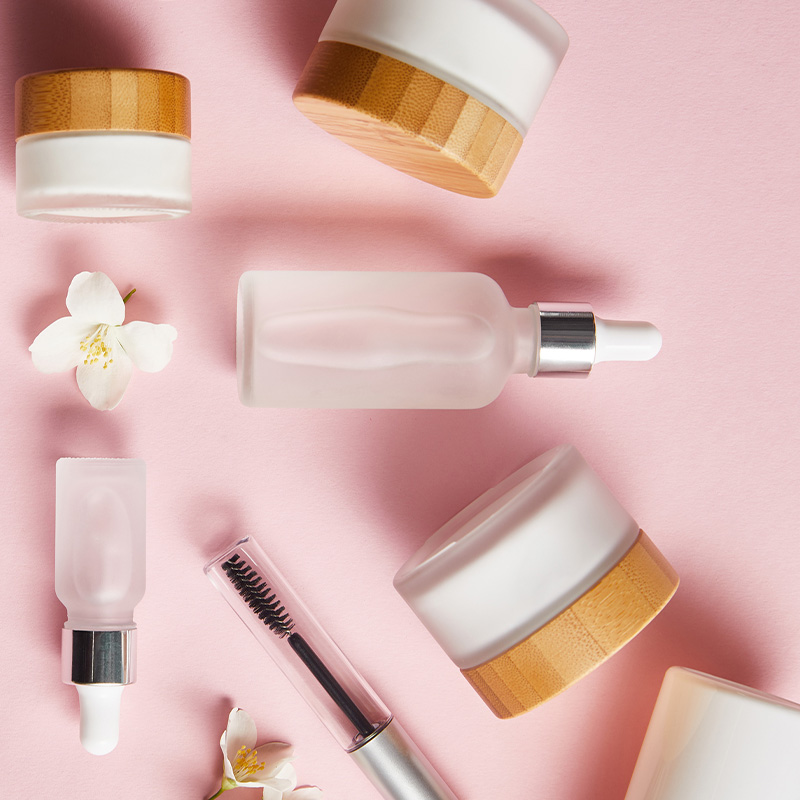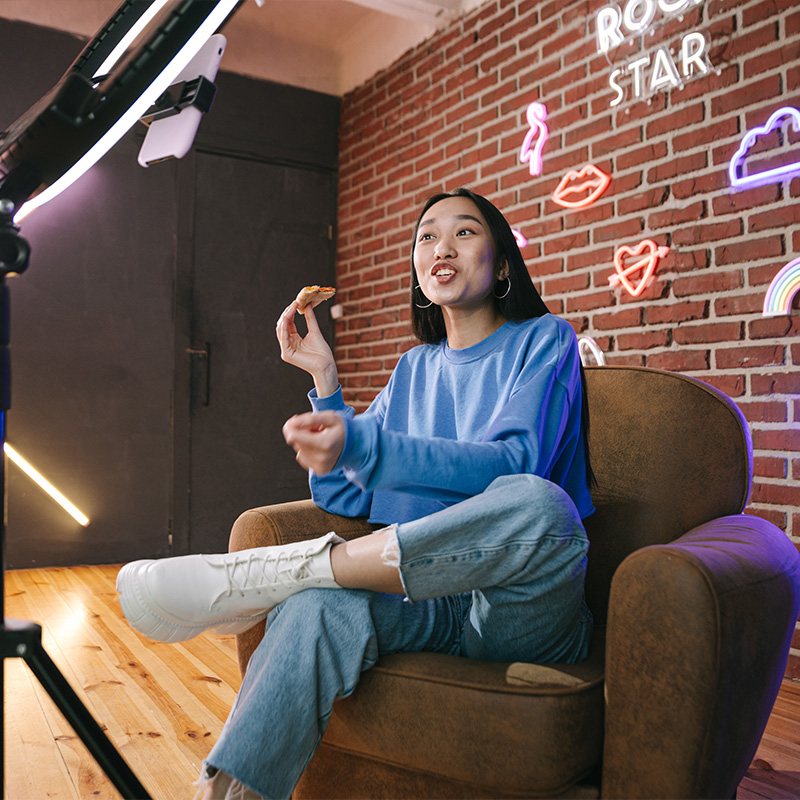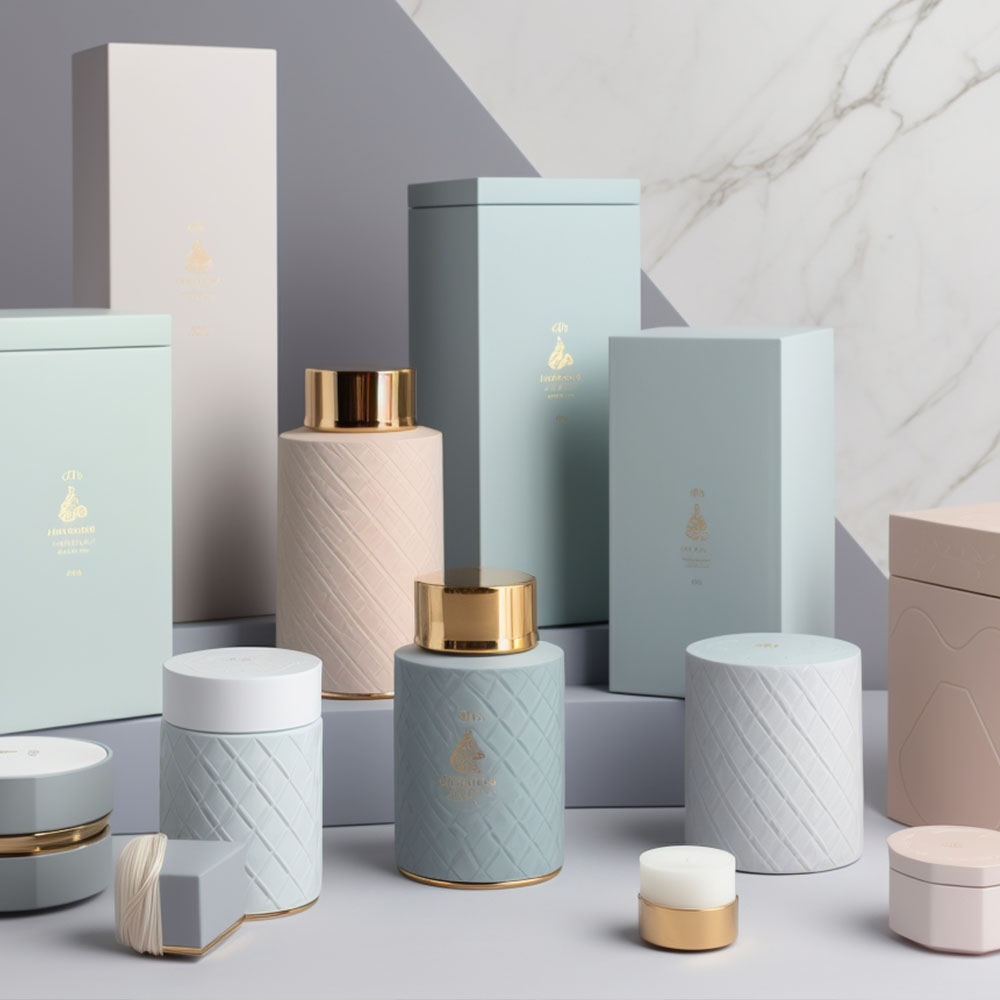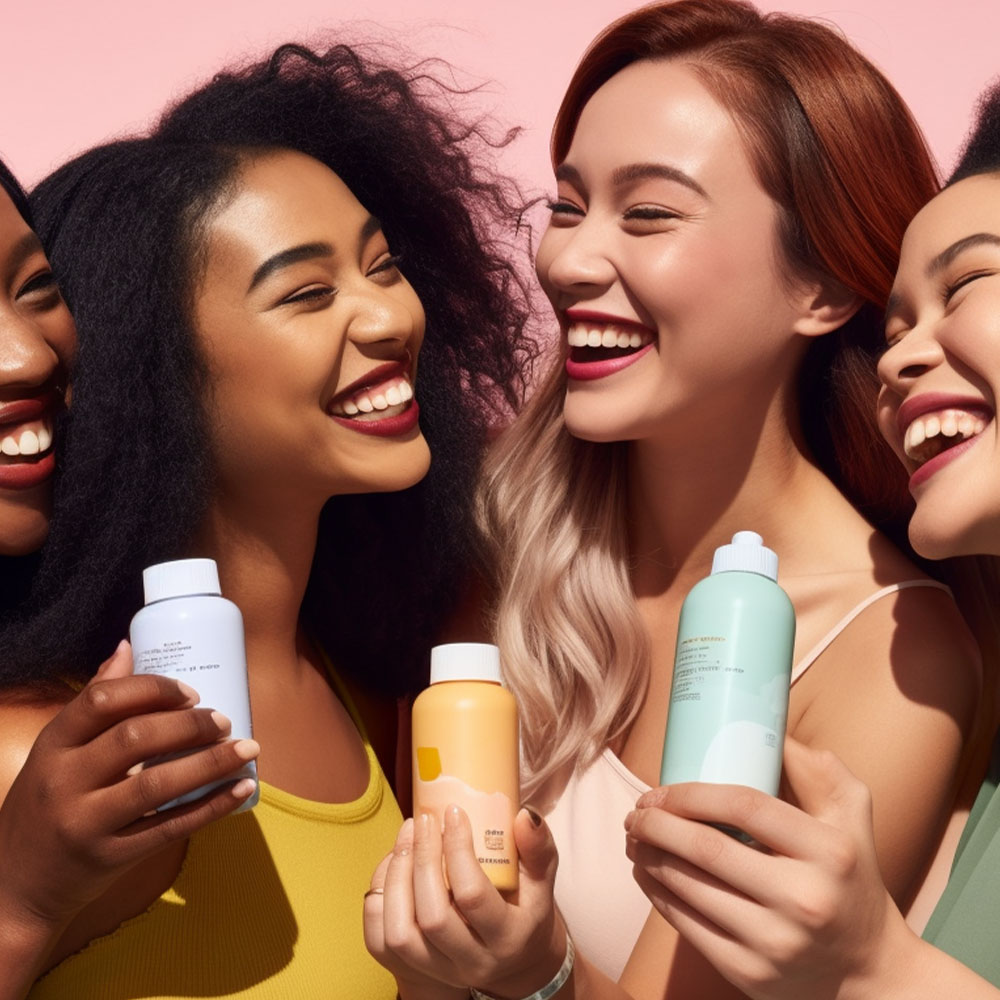
Hey there, beauty enthusiasts! We know how challenging it can be to keep up with the ever-evolving digital marketing landscape. With new trends and technologies constantly emerging, getting lost in the shuffle is easy – especially if you’re trying to do everything manually. That’s where marketing automation comes in.
Automating your campaigns allows you to streamline your processes and free up more time for creativity and innovation. And when it comes to the beauty industry, where competition is fierce, and consumers are always looking for something new and exciting, staying ahead of the curve is essential. So let’s dive into why marketing automation should be at the top of every beauty brand’s priority list.
What Is Marketing Automation?
Marketing automation has become increasingly popular among beauty brands in recent years and for good reason. It is a powerful tool that can help streamline your campaigns, improve customer engagement, and boost sales. However, like any new technology, marketing automation comes with its own set of benefits and challenges.
One of the key benefits of marketing automation is that it allows you to automate repetitive tasks, such as sending emails or social media updates. This saves time and ensures that your messaging is consistent across all channels. Additionally, by using data analytics and segmentation tools, you can create more personalized content that resonates with your audience.
Implementing marketing automation in your beauty brand may seem daunting initially, but it doesn’t have to be. Start by identifying which areas of your business could benefit from automation – perhaps email marketing, lead generation, or social media management. From there, choose a platform that fits your needs and budget.
However, implementing marketing automation also presents some challenges. One common issue is ensuring that the software integrates seamlessly with other systems within your organization. You’ll also need to ensure that staff are adequately trained to use it effectively.
In conclusion, while there are challenges associated with implementing marketing automation in your beauty brand, the benefits outweigh them. By automating repetitive tasks and using data-driven insights to create targeted campaigns, you can engage customers more effectively and drive revenue growth over time.
Benefits Of Marketing Automation For Beauty Brands
We have seen the tremendous benefits of incorporating this technology into campaigns. One significant advantage is its ability to increase sales by delivering targeted messages to customers at the right time. With automation, you can send personalized emails based on purchase history or browsing behavior, increasing conversion chances.
Another benefit is improving customer engagement. By automating your email and social media campaigns, you can create a consistent brand voice that resonates with your audience. You can also segment your list based on interests or demographics, allowing you to tailor content specifically for them. This leads to higher open rates and click-through rates and an overall improvement in customer loyalty.
Marketing automation also allows for more efficient use of resources. Once set up correctly, it runs automatically, freeing up valuable time for other tasks within your business. Plus, the data collected through automation provides insight into what works and doesn’t work so adjustments can be made accordingly.
Overall, implementing marketing automation should be a top priority for any beauty brand looking to stay competitive in today’s market. Increasing sales and improving customer engagement are two reasons this technology is worth investing in. So don’t miss the opportunity to streamline your campaigns and take your business to new heights without sacrificing quality or creativity!
Understanding Your Target Audience
Let’s start by uncovering audience insights – what do they like, value, and buy? We can then use this data to identify target demographics and determine who our campaigns should target. We can also use this data to automate our campaigns and ensure they hit the right people. Finally, we can streamline our campaigns with the correct data and insights and ensure they achieve the desired results.
Uncovering Audience Insights
We aim to help companies streamline their campaigns and achieve better results. One of the critical aspects of achieving this is understanding your target audience–and that means delving deep into consumer behavior and uncovering valuable insights.
Market research techniques are an essential tool in discovering these insights. For example, surveys, focus groups, and data analysis can all provide invaluable information about what motivates consumers to buy, how they make purchasing decisions, and what content resonates most effectively.
By analyzing this data, we can gain a much clearer picture of our target audience- not just on a surface level but on a deeper psychological level. This allows us to create more personalized campaigns that speak directly to their needs and wants, leading to higher engagement rates and more loyal customers.
But it’s not enough to conduct market research once or twice; success comes from constantly monitoring and adjusting your strategies based on new insights you uncover. By staying vigilant in our efforts to understand our target audience, we can continue delivering cutting-edge campaigns that resonate with them on every level.
Identifying Target Demographics
Understanding your target audience is crucial to achieving success in the industry. A critical aspect of this is identifying target demographics through market segmentation strategies. By dividing our broad customer base into smaller groups based on common characteristics such as age, gender, income level, or geographic location, we can create more personalized campaigns and product offerings.
By analyzing beauty consumer behavior data, we can identify patterns within these segments, allowing us to further tailor our marketing efforts. This information helps us understand what motivates each group to buy and how they prefer to receive information about products or services. For example, younger audiences may be more receptive to social media advertising, while older customers may rely more on traditional print ads.
It’s not enough to segment our audience; we must also constantly monitor and adjust our strategies based on new insights we uncover. In addition, as trends change and consumer behaviors shift, we must stay up-to-date with the latest developments to remain relevant in an ever-changing marketplace.
By staying vigilant in identifying target demographics and adapting accordingly, we can continue delivering innovative campaigns that resonate with consumers at every level. With so much competition in the beauty sector today, we must keep striving for more profound levels of engagement and connection with our customers–and by using market research techniques effectively, we can achieve exactly that.
Developing A Marketing Automation Strategy
We highly recommend developing a comprehensive marketing automation strategy with the right tools to streamline your campaigns. This will allow you to create targeted, personalized content that speaks directly to your customer’s needs and preferences.
When developing an effective marketing automation strategy, it’s essential to consider which tools best suit your brand’s unique goals and objectives. Some popular options include email marketing platforms, social media management software, and customer relationship management (CRM) systems. By selecting the right tools for automation, you can save time and resources while increasing efficiency in your overall campaign efforts.
Once you’ve implemented these tools, measuring success is critical to understanding your campaigns’ Performance. Utilizing analytics and metrics such as open rates, click-through rates, conversion rates, and engagement levels can provide valuable insights into what works best for your audience. In addition, this data allows you to make informed decisions about future campaigns and optimize them accordingly.
Incorporating a comprehensive marketing automation strategy with effective measurement tactics is crucial in today’s competitive market. It saves time and increases ROI by providing relevant content that resonates with your target audience. With this approach, beauty brands can stand out from competitors by engaging their customers on a more personal level through automated campaigns tailored specifically to their interests – ultimately leading to increased revenue without sacrificing quality or authenticity.
Choosing The Right Marketing Automation Tools
Evaluating software features is vital when selecting marketing automation tools, so we constantly review all available options. Cost analysis is also essential; we check that the features we need are both cost-efficient and offer great value. We also make sure to look at the long-term costs of any software, as well as ensure any monthly fees are within budget. Finally, we read reviews from other beauty brand specialists to ensure the software is reliable.
Evaluating Software Features
Imagine streamlining your marketing campaigns with just a few clicks of a button. We understand how time-consuming and overwhelming it can be to manage multiple campaigns simultaneously. Choosing the right marketing automation tools is crucial for any successful campaign.
When comparing options, evaluating software features that align with your business goals is essential. -Top-rated software should offer easy-to-use drag-and-drop interfaces, customizable templates, and effective reporting capabilities. It’s also essential to consider integrations with other platforms like social media or e-commerce sites to ensure seamless communication across all channels.
One key feature to look out for is lead scoring – this helps prioritize leads based on their interest in your brand. This lets you personalize follow-up actions and tailor communications toward each lead, increasing conversion chances. Another valuable tool is A/B testing functionality which enables you to test different variables such as subject lines or email content so that you can optimize campaigns effectively.
In conclusion, taking the time to research and compare various software options will ultimately benefit any beauty brand looking to enhance its marketing efforts. By evaluating key features such as customization abilities and integration capabilities, along with advanced functionalities like lead scoring and A/B testing, brands can streamline their campaigns and achieve better results than ever – top-rated software makes all that possible!
Cost Analysis
Now that we’ve discussed evaluating software features when choosing marketing automation tools, let’s dive into another crucial aspect: a cost analysis. We understand the significance of budget optimization and ROI calculation in any successful campaign.
Regarding pricing, various options are available – some platforms offer monthly subscriptions while others may charge based on usage or number of contacts. Considering the initial investment and ongoing costs, such as training or support fees, is essential. Ultimately, you want to ensure that your chosen tool provides long-term value and aligns with your business goals.
One way to evaluate cost-effectiveness is by conducting an ROI calculation. By analyzing metrics like conversion rates and revenue generated from campaigns, you can determine how much return you’re getting on your investment. This information can be used to adjust strategies or justify expenses to stakeholders.
It’s worth noting that while some platforms may have higher upfront costs, they may provide more advanced functionalities that can lead to greater returns in the long run. However, it’s essential to balance these benefits with your budget limitations and prioritize which features are most necessary for achieving your objectives.
In conclusion, conducting a thorough cost analysis is imperative when selecting marketing automation tools for your beauty brand. Using ROI calculations, you can make informed decisions that optimize your budget and campaign performance by considering pricing models, ongoing costs, and potential returns. Remember to weigh the benefits against the constraints of your resources – ultimately, finding top-rated software depends on striking this delicate balance!
Creating Effective Email Campaigns
After choosing the right marketing automation tools, it’s time to focus on creating effective email campaigns. Email marketing remains a reliable lead generation and customer retention channel. However, with increased competition in the beauty industry, your emails need to stand out from the crowd.
Firstly, let’s look at email design. A visually appealing email can increase open rates and engagement levels. Ensure your brand colors are consistent throughout the email template, and use high-quality images relevant to the content. Ensure the layout is easy to navigate, with a clear call-to-action button.
Secondly, we have email content. Your ultimate goal should be to provide value to your subscribers while promoting your products or services. Again, personalization is critical here; segmenting your audience based on their interests and purchase history will allow you to tailor content specific to them. A/B testing subject lines and body copy can also help gauge what resonates best with your audience.
Lastly, don’t forget about segmentation and A/B testing. Segmenting enables you to send targeted messages based on subscriber behavior or demographics. This approach increases relevance, translating into higher conversion rates per campaign sent out compared to batch-and-blast messaging alone .A/B testing involves sending two variations of an email campaign to see which performs better.
Incorporating these tips into your email campaigns will enhance their effectiveness by improving engagement and conversion rates. With well-designed emails containing personalized content, segmented audiences, and tested variations over time – you’ll become a master of successful beauty brand communications without breaking a sweat!
Personalizing Your Marketing Messages
Imagine walking into a department store with endless beauty products. You’re greeted by sales associates who don’t know your name, preferences, or needs. It’s overwhelming, impersonal, and ineffective. The same can be said for marketing messages that lack personalization.
Beauty brand segmentation is the solution to this problem. By dividing customers into specific groups based on their shared characteristics (e.g., age, skin type), you can tailor messaging that resonates with them more profoundly. This leads to higher engagement rates and, ultimately, more conversions.
But segmentation alone isn’t enough – customized ad content is also crucial. Gone are the days of generic ads that appeal to everyone but no one in particular. With today’s technology, it’s easier than ever to create personalized content that speaks directly to each segment of your audience.
Imagine receiving an email about a new skincare line specifically formulated for people with dry skin – not only does it catch your attention because it relates to you personally, but it shows that the brand understands your unique needs and wants as a consumer.
Incorporating these tactics may seem daunting initially, but the payoff is worth it: increased customer loyalty, higher conversion rates, and overall growth for your beauty brand. So take the time to get to know your audience through effective segmentation and provide them with custom content they won’t resist.
Analyzing Your Results
Measuring Performance: Let’s review the performance metrics to see what worked and what didn’t. Optimizing Performance: We’ll use this info to adjust and optimize our campaigns in the future.
Measuring Performance
Tracking metrics is essential to your success. Measuring the Performance of your campaigns will help you evaluate their effectiveness and identify areas that need improvement. By doing so, you can optimize future campaigns and achieve better results.
Tracking metrics can be done through various tools such as Google Analytics, CRM software, or social media platforms. These tools provide valuable data on how many people engage with your content, which channels generate the most traffic, and how much revenue each campaign generates. By analyzing this information, you can determine which campaigns are successful and which need tweaking.
Campaign evaluation is an integral part of measuring Performance in marketing automation. It involves assessing individual campaigns against predetermined goals and objectives. For example, did the campaign reach its intended audience? Did it generate enough leads or sales? The answers to these questions will dictate whether the campaign was successful or not.
In conclusion, measuring the Performance of your marketing automation campaigns requires careful tracking of metrics and thorough campaign evaluation. By understanding what works and doesn’t work for your brand, you can refine your strategy and improve future campaigns’ outcomes. Remember that continuous improvement should always be a priority in marketing automation for beauty brands.
Optimizing Performance
Now that we’ve discussed the importance of analyzing your marketing automation campaign results let’s dive into how you can optimize their Performance. One effective method is through A/B testing strategies. This involves creating two campaign versions and comparing their performances to determine which resonates better with your audience.
Tracking metrics will also be crucial in optimizing your campaigns’ Performance. By tracking various data points such as open rates, click-through rates, conversion rates, and engagement levels, you’ll have valuable insights into what aspects of your campaigns need improvement. You can use this information to tweak elements like subject lines, calls-to-action (CTAs), landing pages, and more to boost engagement and drive conversions.
To ensure maximum optimization potential for your marketing automation campaigns, it’s essential to segment your audience effectively. Segmenting your audience allows you to send targeted messages based on users’ interests or behaviors instead of generic emails that may not resonate well with them. With proper segmentation comes higher email relevance scores leading to improved deliverability rates – ultimately ensuring all efforts are directed towards solid leads.
In summary, optimizing the Performance of your marketing automation campaigns requires continuous monitoring of metrics and implementing A/B testing strategies where necessary. Moreover, strategic audience segmentation ensures that messaging is tailored appropriately -instead of overly broad- ensuring higher relevancy scores and an increased success rate overall. Finally, don’t be afraid to experiment with new ideas; innovation should always be at the forefront regarding beauty brand marketing automation!
Common Mistakes To Avoid
We’ve seen my fair share of campaigns that miss the mark due to common mistakes. These errors can significantly impact your ROI and hinder your progress toward achieving your goals. Therefore, learning from these missteps is crucial to maximize your campaign’s effectiveness.
One of the most significant pitfalls is failing to segment your audience correctly. Segmentation allows you to target specific groups with tailored messages that resonate with them better than generic content. By crafting personalized content for each group, you increase their engagement levels and ultimately drive conversions.
Another mistake many marketers make is focusing too much on promoting their products and neglecting to provide customer value. Instead of bombarding them with countless product promotions, focus on creating educational content that provides real value. This approach will help establish your brand as an authority in the industry while building trust with potential customers.
Lastly, not testing your campaigns before launching them can be detrimental. Testing helps identify any issues or areas for improvement before going live, ensuring maximum efficiency and preventing costly mistakes. Ensure to thoroughly test all aspects of the campaign – from subject lines to landing pages – to guarantee optimal performance.
In conclusion, avoiding common mistakes such as inadequate segmentation strategies, lack of valuable content creation, and failure to test campaigns could lead to missed opportunities for maximizing ROI. However, by implementing best practices and staying vigilant during every step of the campaign process, you’ll set yourself up for success without needing a significant overhaul later.
Embracing Innovation In The Beauty Industry
It’s essential to recognize the pace of digital transformation within the industry. Embracing innovation is not just about implementing new technologies but adapting to changing consumer behavior and preferences. Beauty brands must keep up with these trends, with consumers increasingly turning towards online shopping, social media influencers, and personalized experiences.
One way to embrace innovation in the beauty industry is by utilizing data-driven insights to tailor campaigns and product offerings. By analyzing customer data such as purchase history or browsing behavior, brands can create targeted promotions that resonate with their audience. This personalization improves the overall customer experience and increases brand loyalty.
Another aspect of embracing innovation involves creating an omnichannel approach to reach customers wherever they are. Beauty brands should strive to create a seamless buying journey across all touchpoints, whether through email marketing, social media advertising, or influencer partnerships. By doing so, brands can ensure that they remain top-of-mind throughout the entire purchasing process.
In conclusion, embracing innovation in the beauty industry means recognizing the need for digital transformation and adapting to changing consumer behaviors. Utilizing data-driven insights and creating an omnichannel approach are two ways beauty brands can stay ahead of the curve. As technology continues to evolve rapidly, marketers must continue experimenting with novel approaches while focusing on delivering exceptional user experiences.
Conclusion
We urge you to consider the benefits of streamlining your campaigns with marketing automation. It’s like having a personal assistant who never sleeps and knows precisely what your customers want! By understanding your target audience and developing a strategy, you can choose the right tools and personalize your messages for maximum impact.
But don’t forget to analyze your results and avoid common mistakes. Embrace innovation in the ever-evolving beauty industry and let marketing automation take your brand to new heights. Trust me; it’s worth it – just like applying your favorite lipstick can make all the difference in how you feel, implementing marketing automation can transform your entire approach to customer engagement. So go ahead, try it, and watch as those conversions soar!
Start building your brand with us today. Click here.









